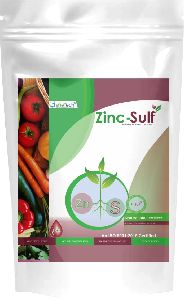
Zinc-Sulf Natural Bio Fertilizer
Get Price Quote
100 Pack (MOQ)
Zinc Sulph (a super powerful nutrient) Production Information : Three types of bacteria have been mixed in zinc sulph. Which respectively increase the usefulness of zinc, sulfur and iron (iron) elements by converting them into soluble form. Methodology: The zinc biobacteria present in zinc sulph produce acid. and converts insoluble zinc sulfide, zinc oxide, and zinc carbonate into available Zn by lowering soil pH and breaking down the complexes. Sulfur biobacteria form active cells that grow rapidly and mobilize the insoluble sulfur present in the soil. This bacterium makes the insoluble iron (iron) element present in the soil soluble and makes it available for the winter of the crop. Thus this powerful biofertilizer increases soil fertility and crop yield. Advantages: This production is environment friendly and suitable for organic farming. It is beneficial for exportable production. It is useful for drip irrigation and sprinkling. It is 100% chemical free product. It improves the quality of the crop by building up immunity in the crops. Keeps the crops green. Also protects crops from stress conditions. Quantity : Seed treatment: Use 8-10 grams of zinc sulph per kilogram of seed. Root Treatment: Use 8-10 Zinc Sulph per liter of water (soaked for 30 minutes). For spraying on the leaves: Use 8-10 grams of zinc sulph per liter of water. Soil application: Use 1-2 kg zinc sulph per acre of land. Method of use : Can be used at any time of the day if the day temperature is 28 or less. If the day temperature is 32 or more then use (spray) only when the temperature comes down to 30 in the evening. While using in the field, there should be sufficient moisture in the field, as well as mix the medicine in soil, sand or compost manure and spread it evenly in the entire field. Precautions : Do not use with any chemical medicine or micronutrient. Keep in a cool place and away from direct sunlight. Recommendation: Apply Zinc Sulph to all cereal crops, all vegetable crops, all fiber crops, all fruit crops and all horticultural crops.